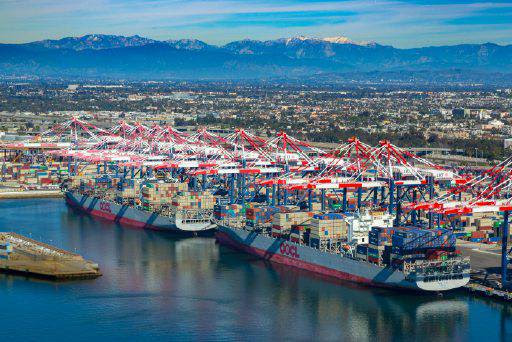
Second-best October for Long Beach cargo
Impacts of tariffs continue to hamper volume
Although tariffs continued to impact cargo volumes, the Port of Long Beach last month had the second-busiest October in its 108-year history.
A total of 688,425 twenty-foot equivalent units (TEUs) were handled in October, 2.4 percent less than the same month last year. Imports dipped 7.4 percent to 337,062 TEUs, while exports jumped 9.8 percent to 131,635 TEUs. Empty containers delivered overseas to be filled with goods decreased 0.8 percent to 219,728 TEUs.
The Port moved 6,366,787 TEUs during the first 10 months of 2019, 5.4 percent down from last year’s record-setting pace.
“As the trade war lingers, these tariffs continue to impact the U.S. economy and have created uncertainty for the business of importers and exporters,” said Mario Cordero, Executive Director of the Port of Long Beach. “We are hopeful for a prompt resolution of the tariff situation between the U.S. and China. In the meantime, we are moving forward with capital improvements that should bring long-term growth.”
“Our facilities, longshore labor, marine terminal operators and all of our industry partners continue to make this the premier gateway for trans-Pacific goods movement,” said Long Beach Harbor Commission President Bonnie Lowenthal. “We will continue to rely on our reputation of moving cargo quickly, reliably and sustainably while providing outstanding customer service.”
For the latest monthly cargo numbers, click here.
More detailed cargo numbers are at www.polb.com/stats.
The Port of Long Beach is one of the world’s premier seaports, a gateway for trans-Pacific trade and a trailblazer in goods movement and environmental stewardship. With 175 shipping lines connecting Long Beach to 217 seaports, the Port handles $200 billion in trade annually, supporting more than 575,000 Southern California jobs.









